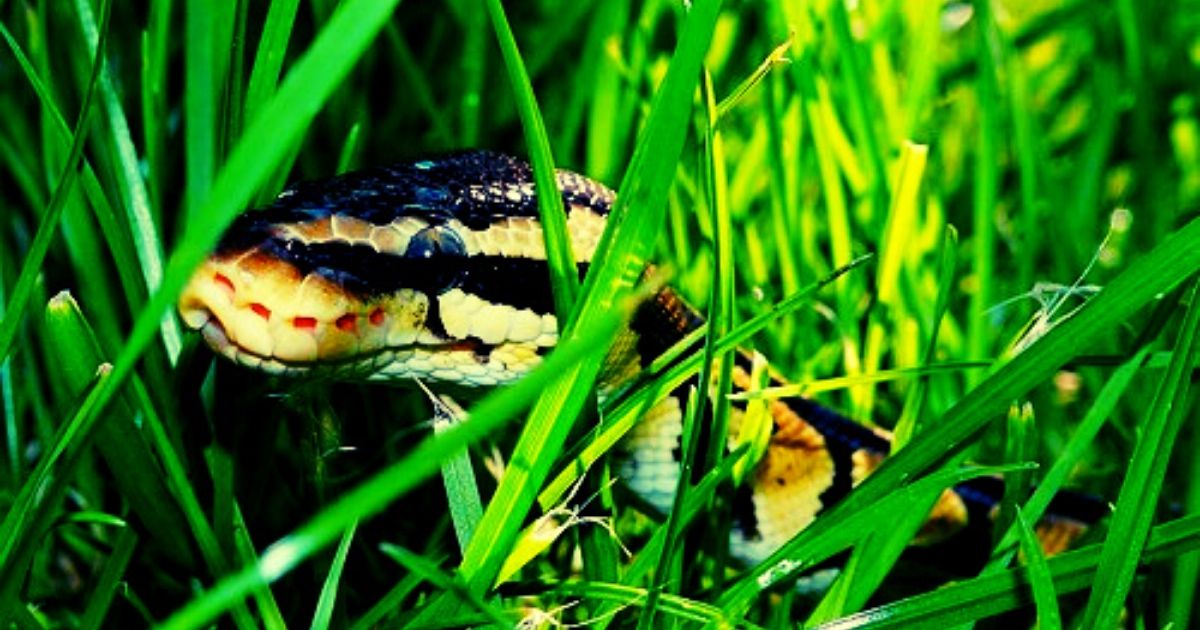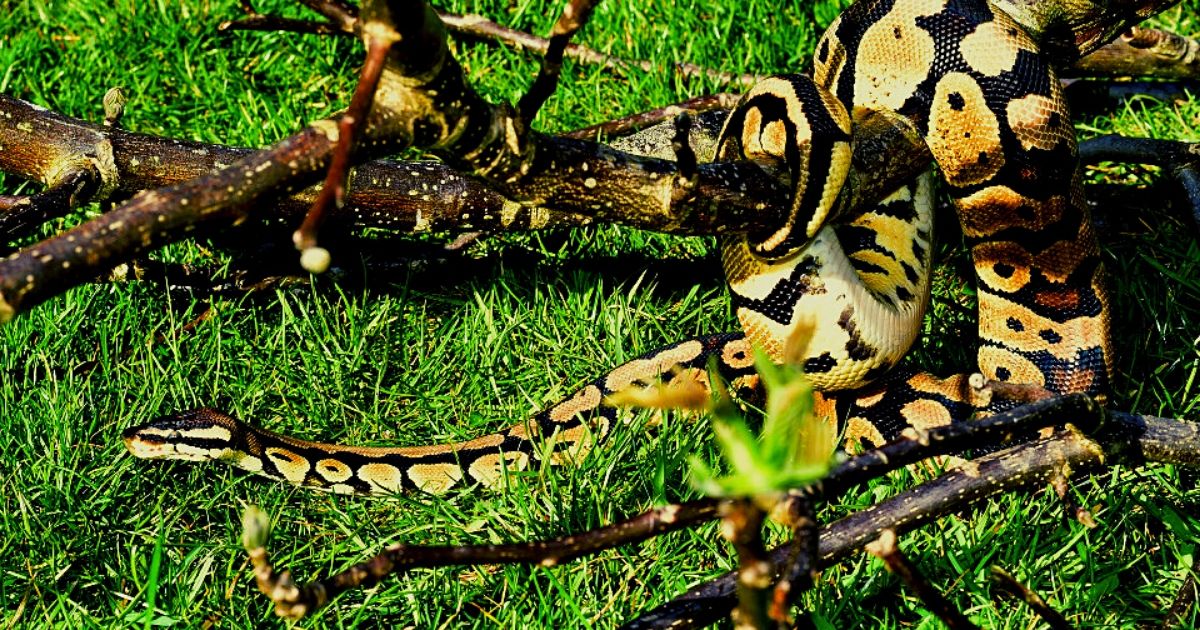The Complete Guide to Snake Prevention, Treatment and Control in Singapore
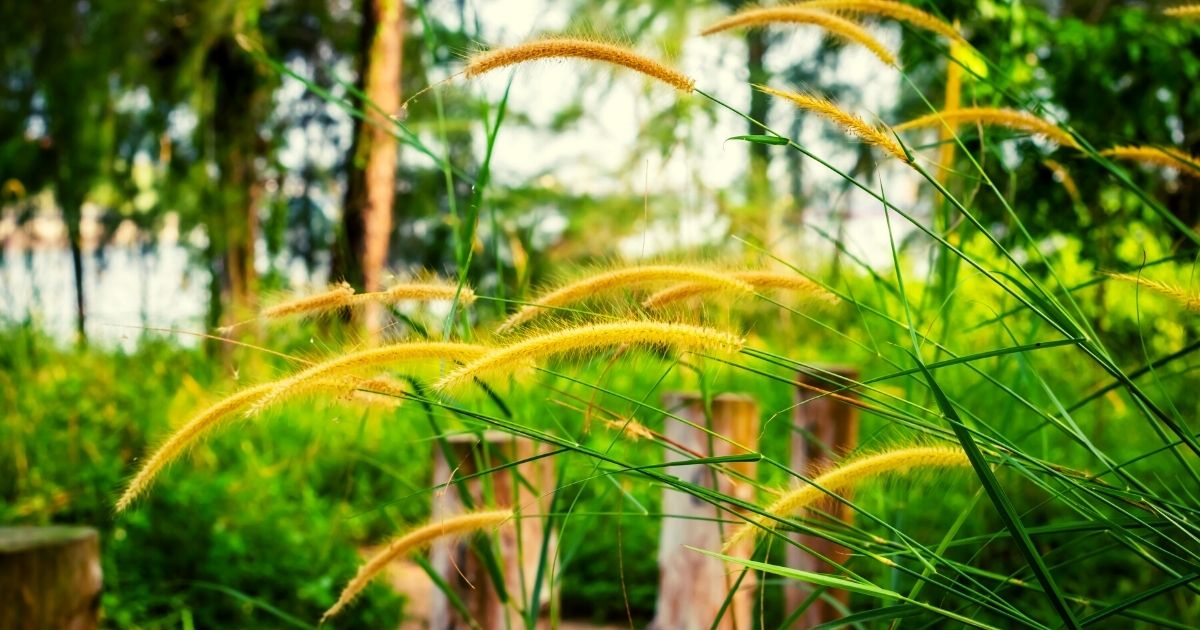
Snakes are one of the most common reptiles that we may encounter in our daily lives. Despite having no limbs, snakes can slither with smooth and agile movements. In Singapore, encounters with snakes are not rare. There are frequent news reports on snake presence in Singapore. Singapore is filled with green plants and colourful flowers; this landscape not only fascinates the public but also attracts a wide range of wildlife around the area.
As a tropical country, it is not uncommon to encounter snakes in Singapore and urbanisation has forced them to live in close proximity to houses and buildings.
Snakes are kept as pets by people in other parts of the world, but it is illegal to keep snakes in Singapore. Although snake enthusiasts may find their pets alluring, snakes can be fearsome to some people, especially those who have had bad experiences with snakes. One of the reasons that cause people to be afraid of snakes is their ability to deliver fatal bites. However, not all snake bites are dangerous. There are plenty of non-venomous snake species.
The encounter with a snake can be a surprise, hence, it is important to be educated and to understand the basics of how to handle snakes. It is easy for us to differentiate snakes from other wildlife, but most of us have little knowledge of their species, biology, behaviour and most importantly, whether they are venomous or not.
Table Of Contents
- Venomous vs Non-venomous Species
- Snake Ecology and Pest Control
- Environmental Factors Influencing Snake Behaviour
- Types of Snakes in Singapore
- Life Cycle and Biology
- Medical Importance
- Signs of Snake Infestations
- How to Prevent Snakes from Invading Your Home
- DIY Methods to Prevent Snakes in Singapore
- What to do When You Encounter a Snake?
- Professional Snake Removal in Singapore
- Handling Snakes by Killem Pest
Venomous vs Non-venomous Species
Many people struggle to distinguish between venomous and non-venomous snakes. Clarifying the key differences in behaviours, appearance, and ecological roles of these two groups can help reduce unnecessary fear. Non-venomous species, for instance, are beneficial because they help control pests without posing significant danger to humans, while venomous species tend to have specific prey and usually avoid human interaction unless threatened.
Snake Ecology and Pest Control
Snakes play an essential role in controlling pest populations, particularly rodents, which are a common issue in urban areas. By feeding on these pests, snakes act as natural pest control agents. This ecological service can be highlighted to mitigate people’s fears about snakes and promote their importance in maintaining a balanced ecosystem. Even non-venomous snakes, like pythons, contribute significantly to reducing rodent populations.
Want to find out more about snake removal in Singapore?
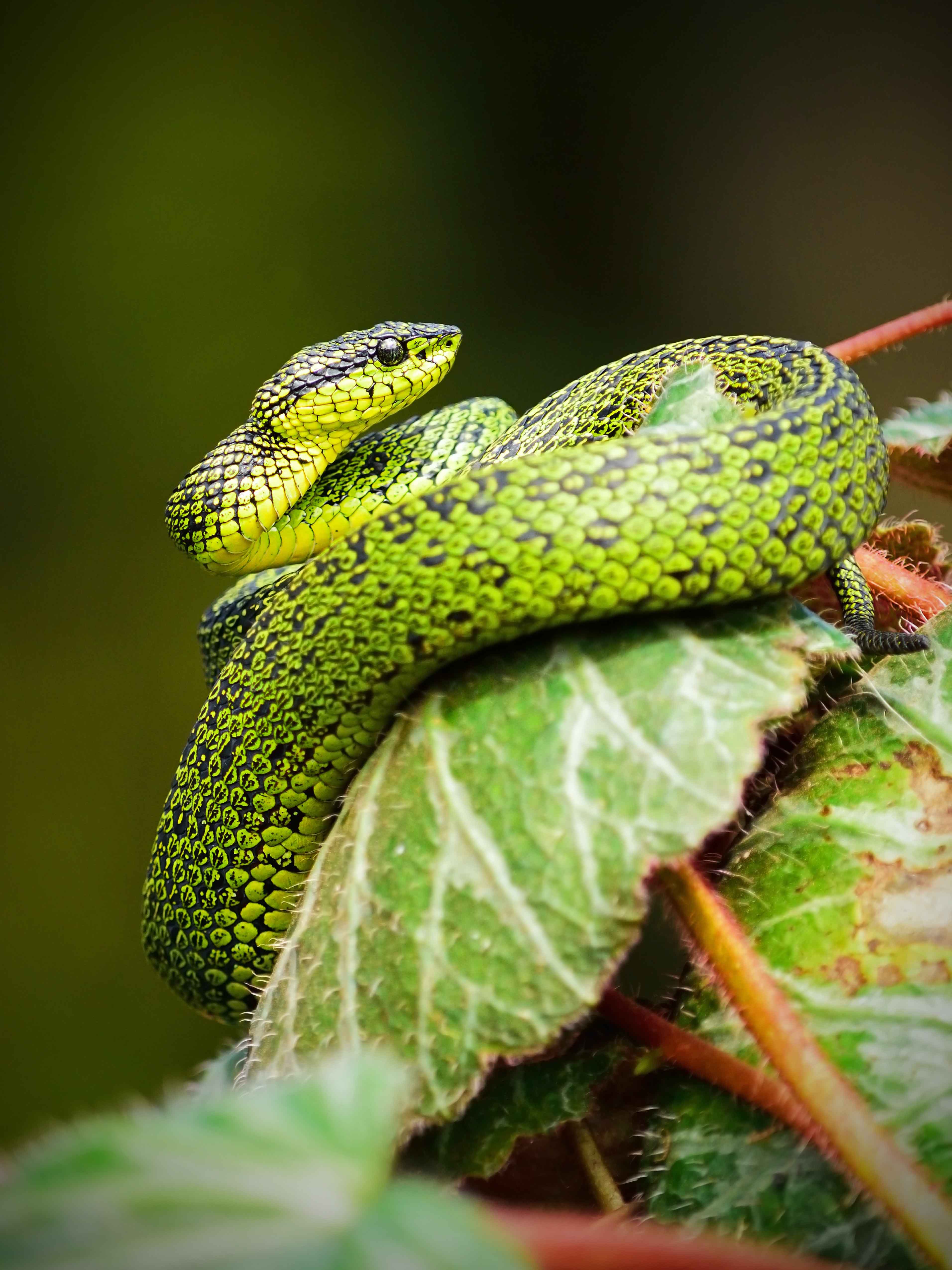
Environmental Factors Influencing Snake Behaviour
Tropical environments, like that of Singapore, have weather patterns that affect snake activity. For example, snakes are more likely to be encountered during the rainy season, as they come out of hiding due to increase prey availability and changes in temperature and humidity. Understanding how environmental conditions affect snake behaviour can help people predict and prevent encounters.
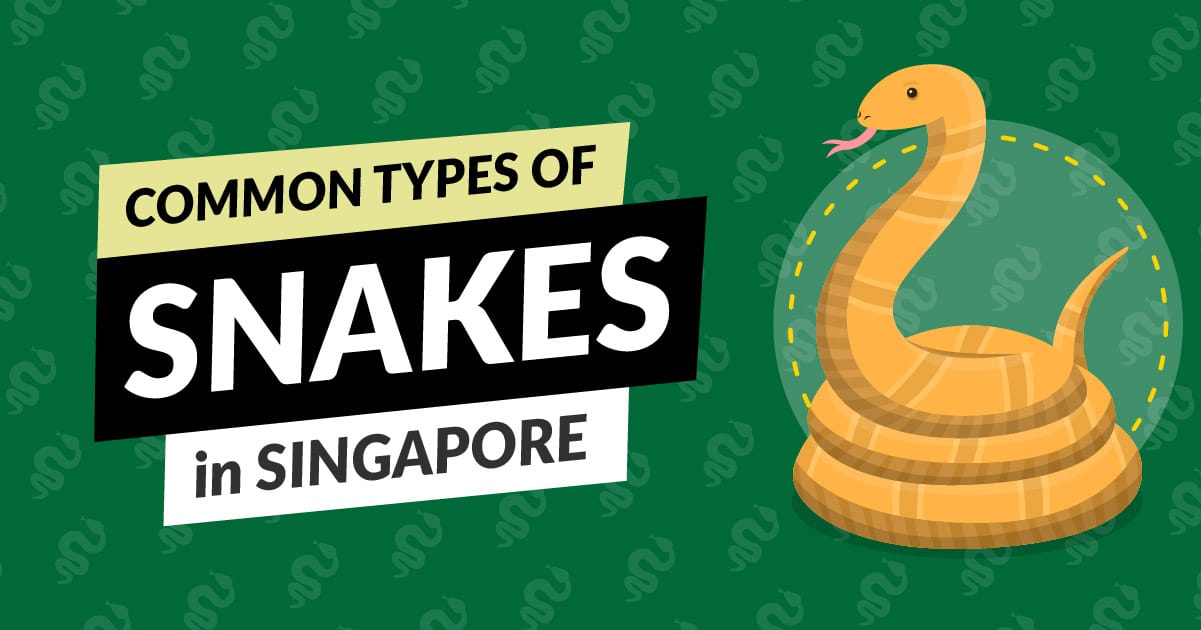
Types of Snakes in Singapore
There are over 3000 snake species in the world, but not all of them can be found in Singapore. Here are some common types of snakes in Singapore:
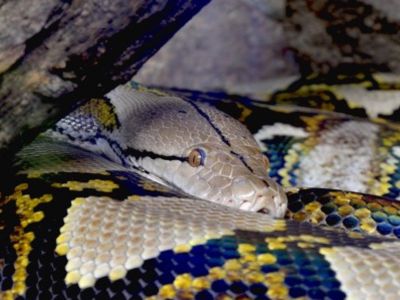
Reticulated Python (Malayopython Reticulatus)
The reticulated python is the longest snake in the world. It can reach over 8 meters. Reticulated pythons have a distinct, alternating, consistent zigzag pattern of black, yellow, brown, and white scales. It is non-venomous and feeds mainly on small mammals, rodents, and birds.
Although the reticulated python is non-venomous, it has the strength and length to constrict its prey before feeding on it. It is nocturnal, meaning that the reticulated python is primarily active at night. In addition, it can be found in a wide range of habitats from low land to highland, forests, mangroves, and drain canals. In Singapore, pythons are commonly found inhabiting urban areas such as drains and canals.
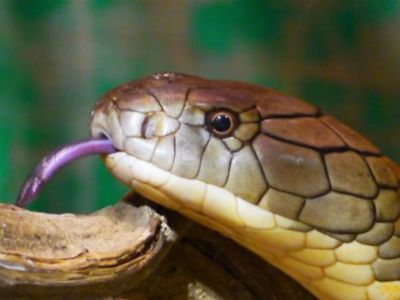
King Cobra (Ophiophagus Hannah)
The king cobra is notoriously known as the world’s largest venomous snake with an average of 3 meters in length. King cobras can be found in varying colours but are mainly in shades of light brown to dark brown and even black with a pale-yellow tint. They can be seen in forests or lowland areas to areas of high elevation.
King Cobras are diurnal as they usually hunt during the day. Their diet consists of other snakes, rodents, and lizards. King Cobras are shy and retreating. However, they can be aggressive when provoked or cornered. Thus, one should never try to confront King Cobras to avoid getting fatal bites. If encountered, it is best to stay clear of its path and move away quickly.
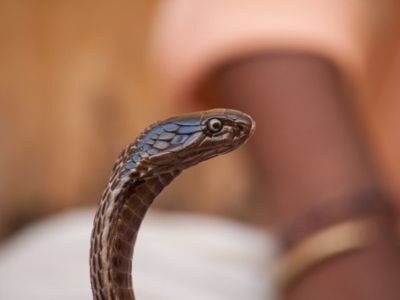
Black Spitting Cobra (Naja Sumatrana)
The Black Spitting Cobra is also known as the Equatorial Spitting Cobra. As the name suggests, the black spitting cobra can contract its venom gland to spit venom onto its target, mainly aiming for the eyes. The venom can cause severe damage to the eyes and their surrounding areas, and may cause blindness if left untreated. The Black Spitting Cobra diet consists of rodents and amphibians. It is active at night, and prefers cooler places like shelters, drains, and garden walls.
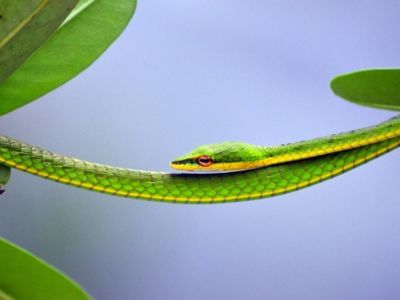
Oriental Whip Snake (Ahaetulla Prasina)
The oriental whip snake is a fairly small and lanky snake. Its appearance can range from light brown to bright green, and its coloration allows it to blend in with vegetation. Oriental whip snakes can grow up to approximately 2 meters in length. They feed on birds, lizards, and frogs with the help of their venom.
Not all oriental whip snakes are venomous and the venomous ones will not result in death. As the venom is usually relatively weak, oriental whip snakes are not problematic to humans. Oriental whip snakes are active during the day and are typically seen amongst low-hanging trees or tangled between vines in forested areas.

Banded Krait (Bungarus Fasciatus)
The banded krait is one of the more prominently patterned snakes with black and white stripes from head to tail. It feeds mainly on other snakes as well as animals such as rodents, lizards, cats, and fish. Banded krait is nocturnal and can be found in forested areas near rodent holes, termite mounds, and places close to water. This species should always only be spotted from afar and not approached, as it is venomous and may bite if threatened.
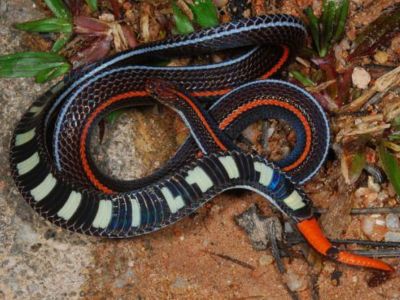
Banded Malayan Coral Snake (Calliophis Intestinalis)
The banded Malayan coral snake has an average size of 40 to 60cm in length. It can be distinguished by its bright red tail and reddish stripe along the length on the top side of the body. Banded Malayan coral snakes feed on other snakes and are active at night, commonly found in forests, parks, and gardens. Although a banded Malayan coral snake may look small and attractive, its venom is potent, so one should never try to approach it.
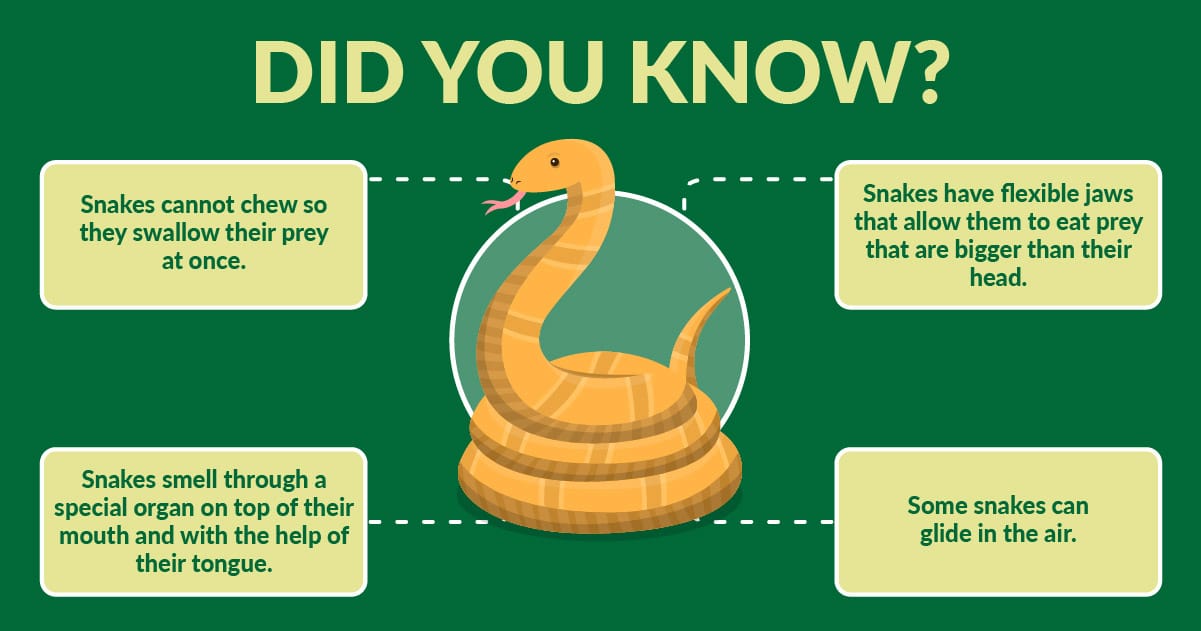
Life Cycle and Biology
Depending on the species, snakes can live more than 20 years, with the larger ones having a longer lifespan than the smaller ones. Snakes are born in eggs. There are two types of egg births known:
- Oviparity
- Ovoviviparity
Most snakes are oviparous, meaning that they lay their eggs outside their bodies, and young snakes will hatch from the eggs. Ovoviviparous snakes also produce eggs, but they keep the eggs inside their bodies during incubation. The newly hatched snakes will look like they were born directly from the mothers’ body.
Although snakes are legless reptiles, not all legless reptiles are snakes. For example, lizards only have front or back limbs or are completely legless. All snakes are predators, but only a portion of them are venomous. Even a smaller fraction of snakes are capable of inflicting lethal bites.
Interesting fact: Snakes can't chew their food, so they have to swallow it whole (even items up to 10 times bigger than the size of their head).
Medical Importance
One reason that causes the fear of snakes is a snakes’ ability to inflict lethal bites. According to the World Health Organisation (WHO):
- There are over 3000 species of snakes in the world
- 600 snake species are venomous
- Over 200 species of venomous snakes are considered to be medically important
These medically important venomous snakes can cause injury, disability, and even death. The symptoms associated with snake bites vary depending on the type of snake.
Symptoms include:
- Puncture wounds or bite marks on the skin
- Redness, swelling, bruising, blistering, or bleeding around the bite
- Severe pain and tenderness
- Nausea, vomiting, diarrhoea, dizziness, headaches, and blurred vision
- Shortness of breath
- Rapid heart rate, weak pulse, low blood pressure
- Metallic, mint, or rubber taste in the mouth
- Increased salivation and sweating
- Numbness or tingling around the face and/or limbs
- Muscle twitching
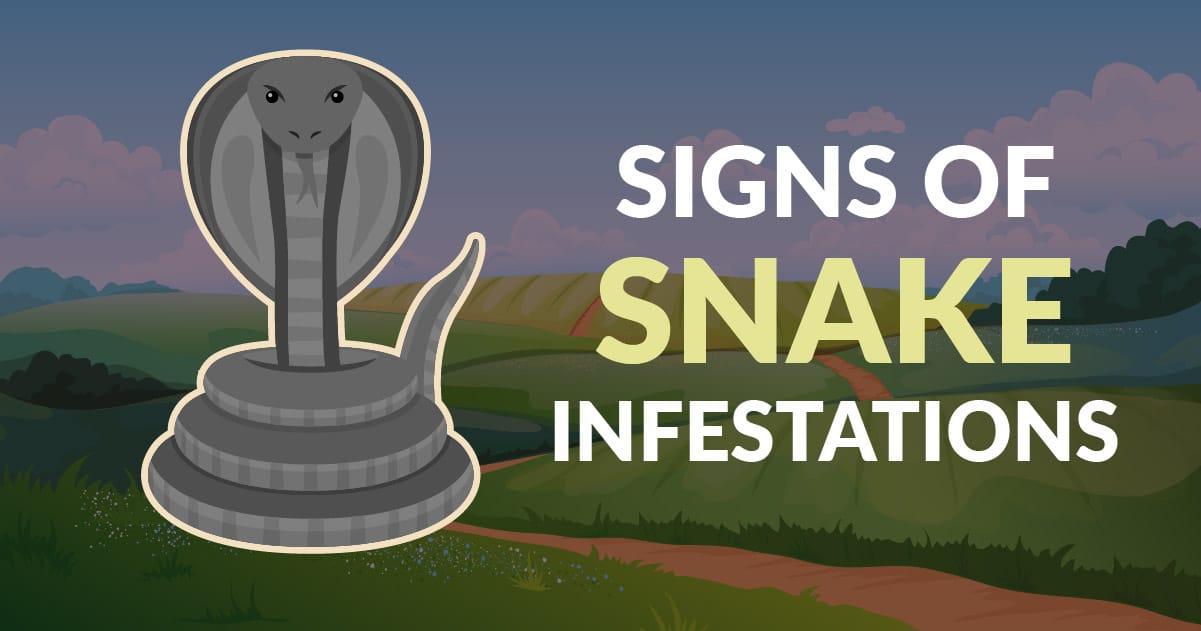
Signs of Snake Infestations
1. Shed skin
Snakes shed their skin as they grow. The discarded skins may be found in places where snakes rest. This is one of the most apparent signs of snake infestations. While it may be fine to spot one around your house, you should be concerned if you see snakes frequently.
2. Slither tracks
Snakes have a unique movement known as slithering. As they slither, they leave behind distinct tracks on the dusty or sandy ground.
3. Droppings
The faeces of snakes are another important sign of a snake infestation. Snakes’ faeces may resemble birds’ droppings as they are liquid and contain urine, or they may be in a solid form that contains undigested pieces of their food, such as bones and hairs.
4. Strange noises
Although snakes are silent and do not vocalise, they may make noises as they move through cluttered areas and touch other objects. The sounds of slithering and falling objects may be a sign of a snake infestation.
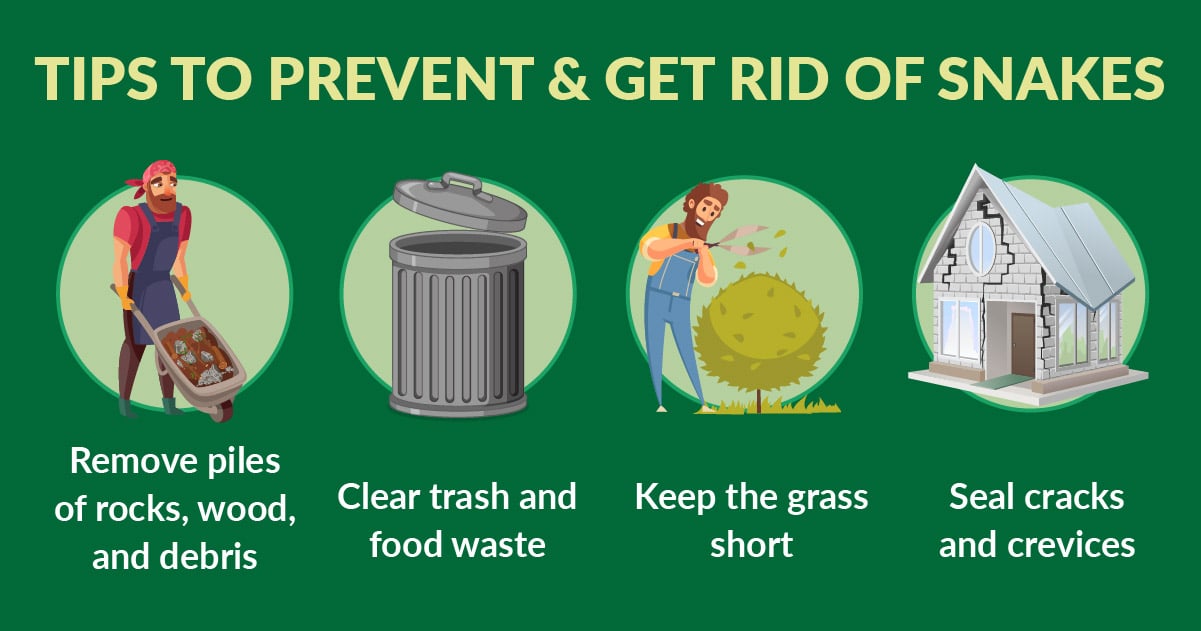
How to Prevent Snakes from Invading Your Home
1. Remove piles of rocks, wood, and debris
Piles of rocks, wood and debris serve as the hiding places of snakes and their prey. Maintain good housekeeping and keep your house free from debris to help prevent infestations of snakes.
Clutters and piles of debris provide ideal hiding and breeding sites for animals such as rodents, which serve as a food source for snakes. Snakes can also seek shelter among the clutter as they provide protection from predators and harsh weather conditions.
2. Clear trash and food waste
Although snakes are predators and do not feed on human food waste, food waste attracts pests like rodents. Rodents, in turn, are food sources of snakes. Waste bins should be covered. Food waste should be properly disposed of to prevent rodents from gaining access to the food, as this can cause rodent infestations, and subsequently, snake infestations.
3. Keep the grass short
Not only does grass attract mosquitoes, but it also attracts snakes. Long grass provides the perfect cover for snakes to hide from their predators and sneak up to their prey. Snakes are found in a variety of colours and patterns that they use as camouflage. The presence of long grass further facilitates snakes to blend in with the surroundings.
4. Seal cracks and crevices
Cracks and crevices are the hiding spots for pests, including snakes. Cracks and crevices provide shelter for snakes and protect them from threats present in the surrounding environment. Snakes can also enter your house from the surroundings through cracks or holes. Do look out for all potential entry points, cracks and crevices around your home. Make sure to seal them to avoid harbouring snakes and other pests in your house.
DIY Methods to Prevent Snakes in Singapore
Instead of trying out various methods to repel snakes, you can try to maintain good housekeeping around your house to keep snakes away from you. Sealing all the potential entry points and hiding sites mentioned above will help to prevent snakes from entering your home.
What to do When You Encounter a Snake?
Snakes are not as terrifying as they seem. By knowing what to do when you encounter them, no harm will be done to you or the snakes. Always remind yourself to remain calm and not panic when seeing a snake. Panicking may cause you to make the wrong decisions.
Snakes usually have no interest in humans as they usually prey on other small animals. The snake may be startled or provoked by your actions thus causing them to attack you. It is likely for snakes to flee when they see humans, so you should also walk away from them if possible.
Professional Snake Removal in Singapore
Handling snakes on your own is not a good idea. Seeking help from professionals will be the right way. Avoid confronting or attacking a snake with a stick or broom as it may still be able to injure you.
If you ever get bitten by a snake, it is important to try to stay calm and seek immediate medical attention. You might have probably seen someone sucking out snake venom from a victim in a movie scene. However, in reality, it is almost impossible to suck the venom out as it spreads quickly and efficiently in the lymphatic system. The best thing to do if you ever get bitten by snakes is to minimise movement and call a doctor or an ambulance immediately.

Wildlife Intrusion? Let Us Help.
We offer fast and effective solutions to ensure a secure environment for your home or business while prioritizing wildlife protection.
Handling Snakes by Killem Pest
Many agencies like Wildlife Reserves Singapore (WRS), Animal Concerns Research and Education Society (ACRES) and Agri-Food & Veterinary Authority of Singapore (AVA) are dedicated to protecting and educating the community about wildlife. Killem is no stranger to wildlife and handling snakes, working closely with these agencies to ensure that these animals are handled with care and handed over to them.
With the recent enforcement of the Wildlife Act in Singapore, special courses and training were prepared for people involved who deal with wildlife removal activities. Our PCOs are kept updated on any changes and continually attend seminars like the Wildlife Handling Seminar organised by the Singapore Pest Management Association (SPMA).
Our PMPs are trained in using a variety of equipment to trap and handle snakes safely and humanely. Snake tongs are a piece of equipment with a long pole that ensures a safe distance from the head of the snake. The controllable jaws at the end of the grabber help to lift or drag the snake away firmly and gently. Besides snake tongs, other ways snakes can be captured include using towels, bags, pillowcases and dustbins.
Venomous snakes require more caution when handling compared to non-venomous snakes as they differ in terms of movement and behaviour where the former moves its head before moving its body.
From our experience, snakes should never be restrained at the head or by their tail. This is because these are their sensitive regions, restraining their head and tail can provoke their aggressive behaviour as they feel threatened. Restrained or temporarily captured venomous snakes should always be labelled, as some can spit venom up to 2m and even chew through the bags they are contained in.
Frequently Asked Questions
There are 7 species native to Singapore that are considered highly poisonous: the King Cobra, Black Spitting Cobra, the Banded Krait, Banded Coral Snake, the Malayan Blue Coral Snake, and the Wagler’s Pit Viper.
Venomous snakes can be identified by the shape of their head: a triangular head is a sign that a snake is venomous. If its tail is rattling, it’s venomous. In any case, it’s best to stay away from any snakes.
Snakes are often attracted to yards and houses when there’s food or shelter for them. This can include leaf piles, gaps or cracks in your house, composting near the house, or else. Feeding pets outside, birdfeeders, or mulch can also draw snakes to your yard.
Although snakes mostly live in forested areas, you can encounter them in city areas as well. Gardens and lawns or parks can be hot spots for snakes.
Snakes can enter your house through holes and cracks in the building, or they can also squeeze into gaps between doors or water pipes, or climb into the attic.
It is advised not to try to get rid of snakes on your own, so better call the wildlife control company. While you are waiting for help, you can try to create a barrier around the snake and open doors and windows for it to escape.


